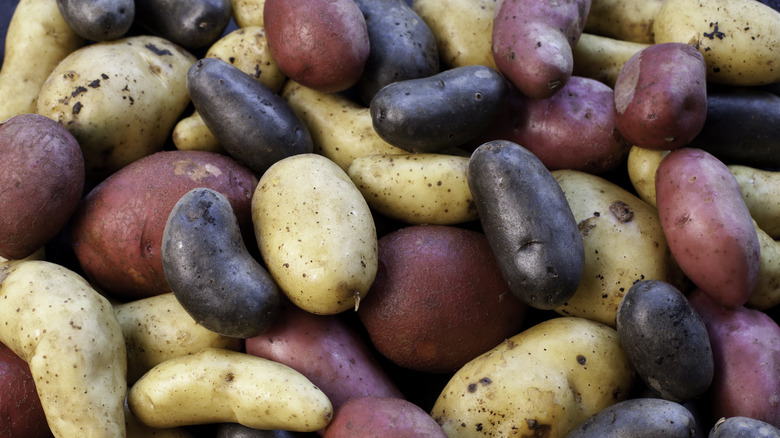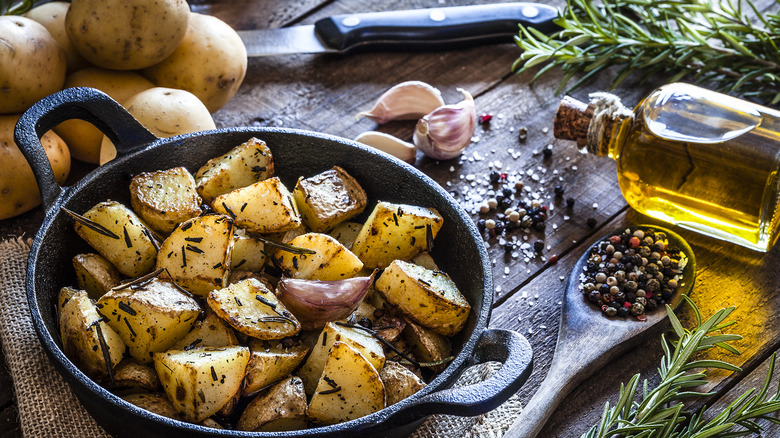The Popular Carbohydrate That Has More Potassium Than A Banana
While many people get plenty of sodium in their diets, particularly from processed foods, potassium is lacking in many people's diets. Potassium works to counterbalance the effects of sodium on the fluid levels in your body. It's also essential for the health of your kidneys and heart, and helps with muscle contraction and nerve transmission. Getting more potassium in your diet while lowering your sodium can reduce your blood pressure and risk of stroke (per the National Institutes of Health).
Women should get 2,600 milligrams of potassium a day, and men need 3,400 milligrams. Rather than scroll through Amazon for a potassium supplement, it's best to get your potassium from food because high levels of potassium in your blood can be toxic. Bananas are well-known for their potassium, but a single medium red potato gives you 943 milligrams of potassium. That's twice the potassium of a banana. Potatoes also have some other healthy nutrients you might not have considered.
Antioxidants and sustained energy in potatoes
Potatoes are also packed with the antioxidant vitamin C. UC Davis Health says the darker the potato's skin color, the more antioxidants it contains. Potatoes also have phenols, carotenoids, flavonoids, and anthocyanins to fight off free radicals and inflammation (per the University of Maine). Be sure to eat the skin of the potato, because that's where you'll get most of its antioxidants. Some types of potatoes have 10 to 12 times more antioxidants in the skin than in the flesh. No, that's not the potato skins you order at your favorite pub; those are typically deep-fried and drizzled with cheese and sour cream.
Cyclists already know the benefits of potatoes to fuel their long rides, stashing them in the back pockets of their cycling jerseys. A 2019 study in the Journal of Applied Physiology found that potatoes work just as well as those sugary energy gels to sustain workouts. The researchers compared the effects of consuming potato purée with water or a commercial carbohydrate gel during prolonged cycling and a timed speed trial. The time trial performance improved in both the potato and gel conditions compared to water.
Starch can be good for you
Starchy foods are used in some cultures to fill out meals to make people feel full. Potatoes are starchy vegetables, which is why many low-carb diets say no to them. Starchy vegetables tend to have more calories but less fiber, so you can see why other dieters stay away from potatoes (per UC Davis Health).
Yet starch isn't necessarily bad. If you cook and then cool raw potatoes, they can be great for your digestive system, according to Healthline. Cooling the potatoes after cooking them changes the starch to resistant starch, which acts like a soluble, fermentable fiber. These fibers pass through your stomach and small intestine, where they feed the good bacteria in your gut. The product is the short-chain fatty acid butyrate. Butyrate sustains the cells that line your colon to prevent harmful pathogens from getting into your blood and brain (per UW Medicine).
You might find your digestive system improves because resistant starch can reduce gut inflammation. Resistant starch can also improve insulin sensitivity and lower your glucose levels (per Healthline).



